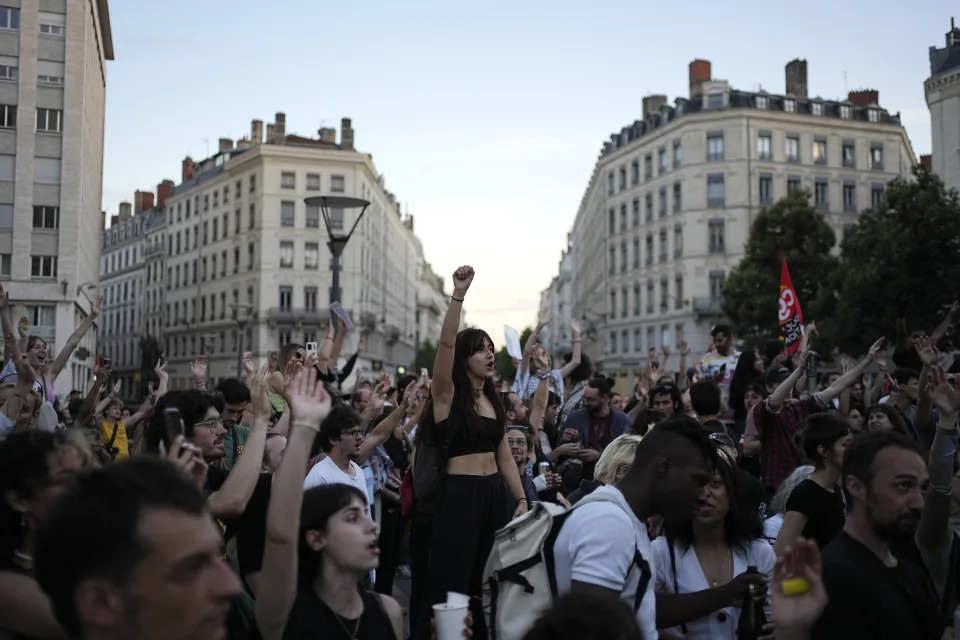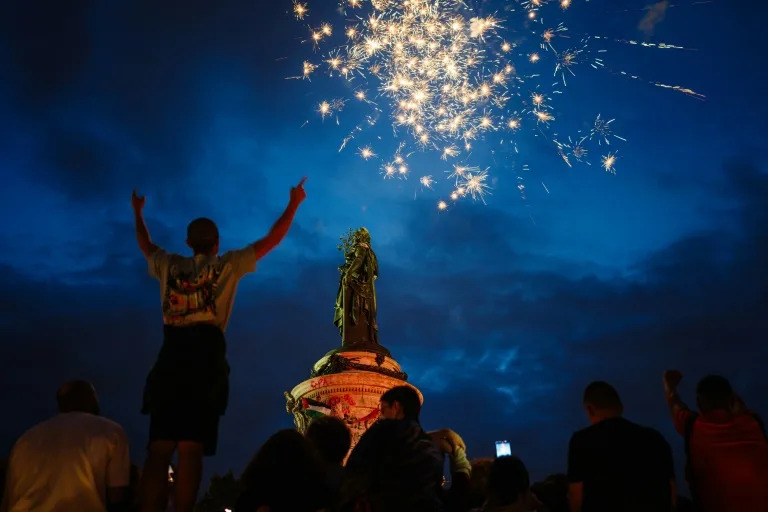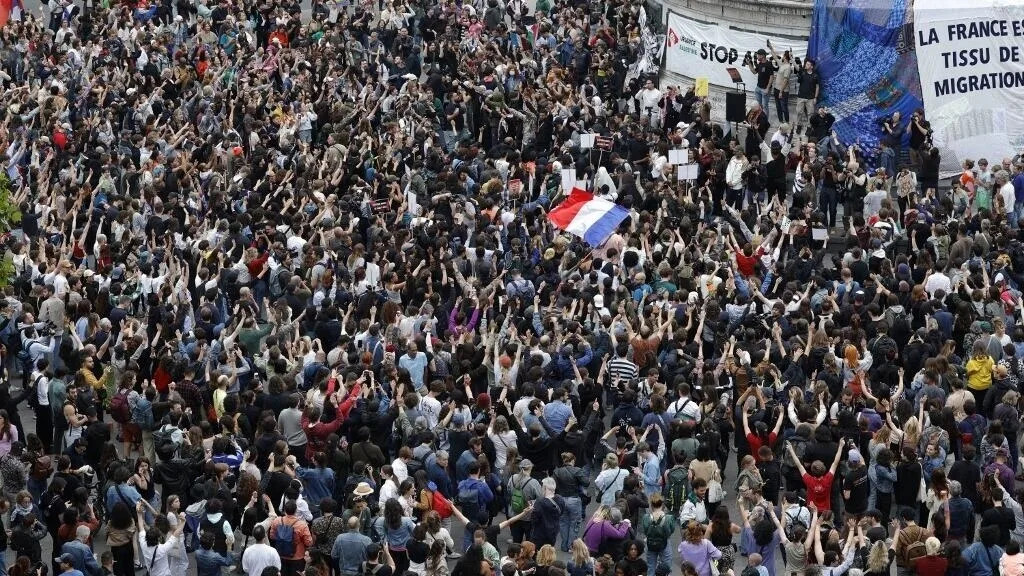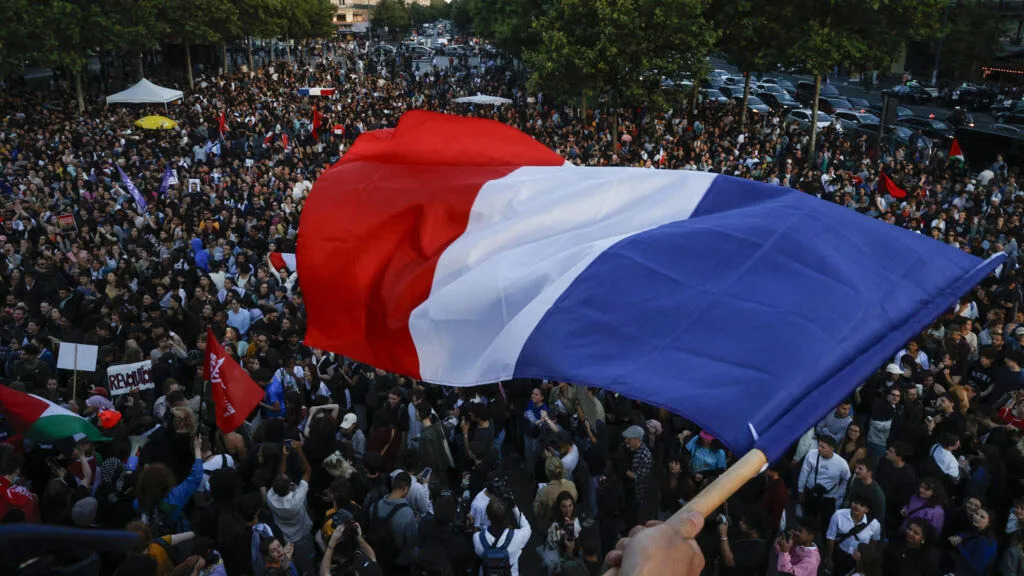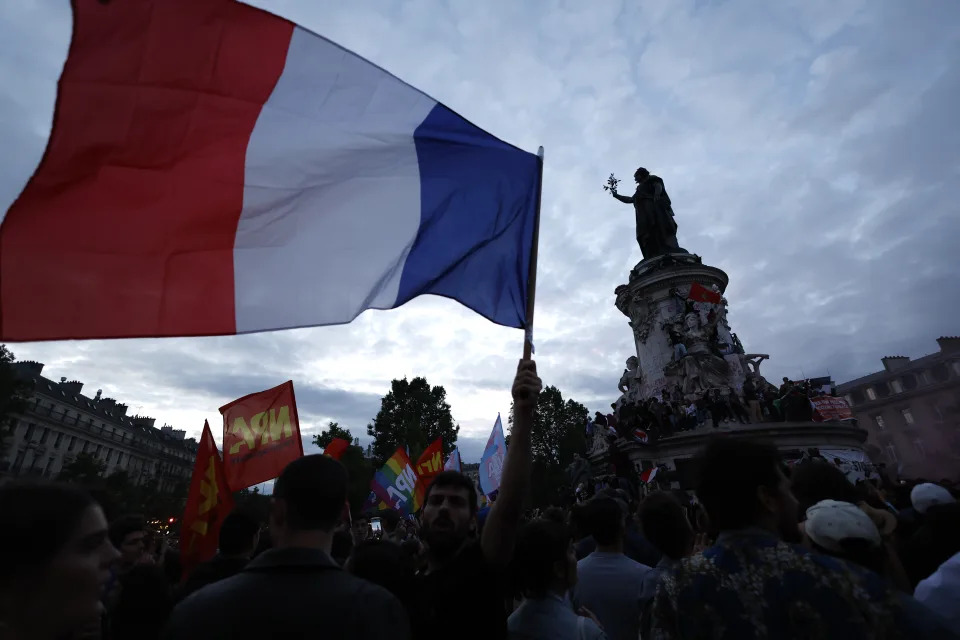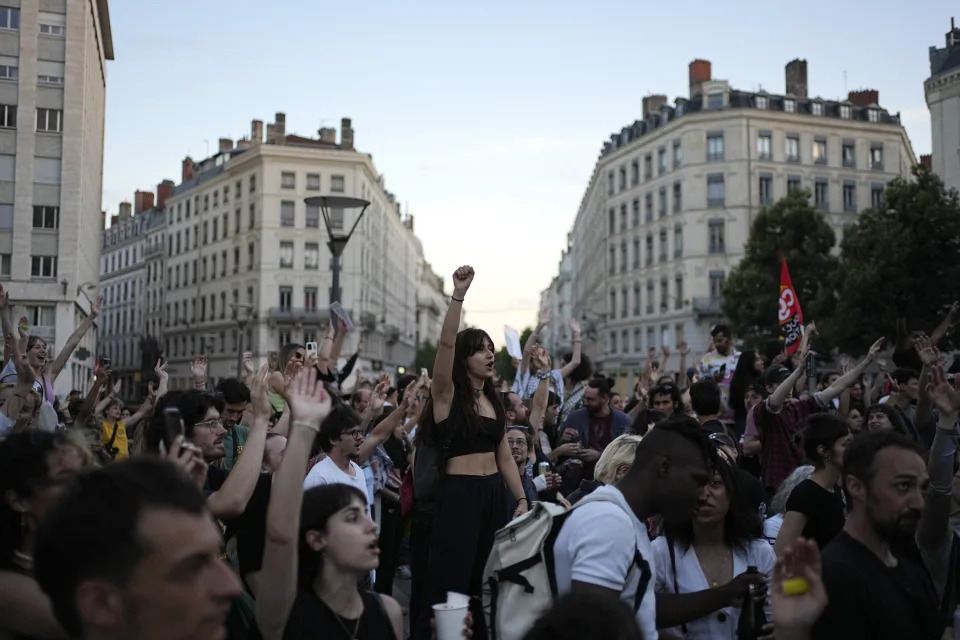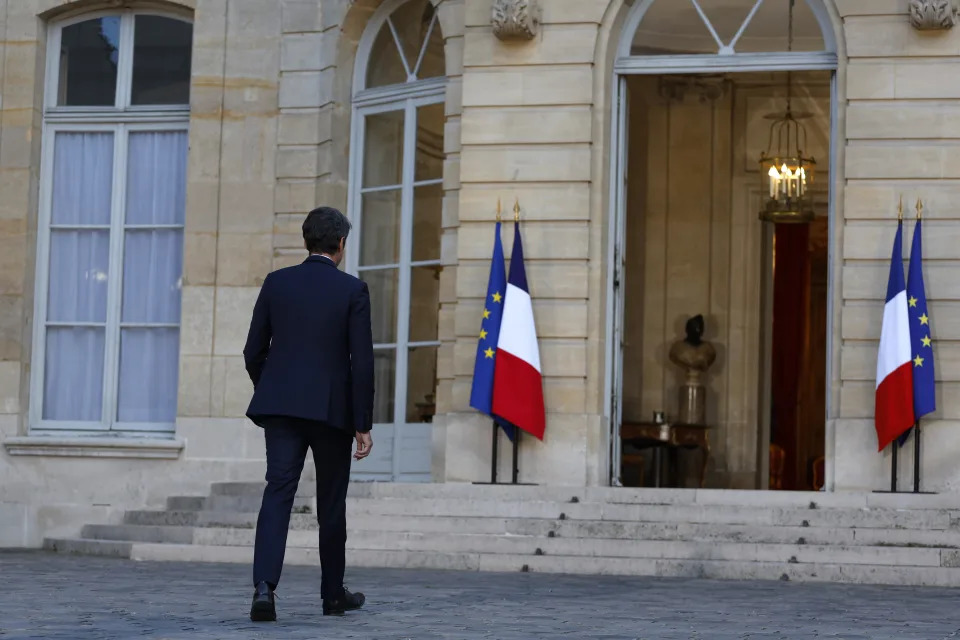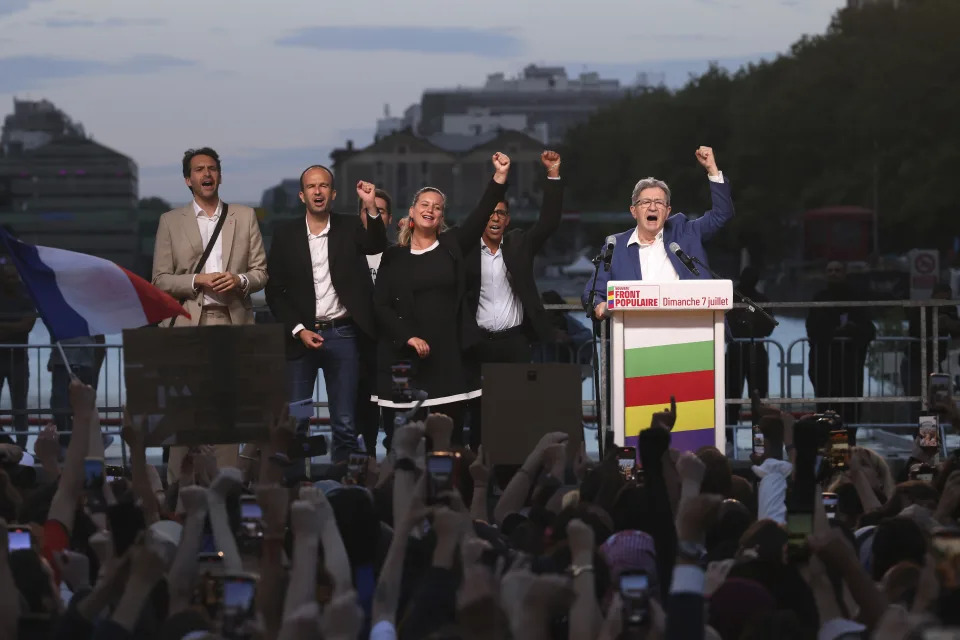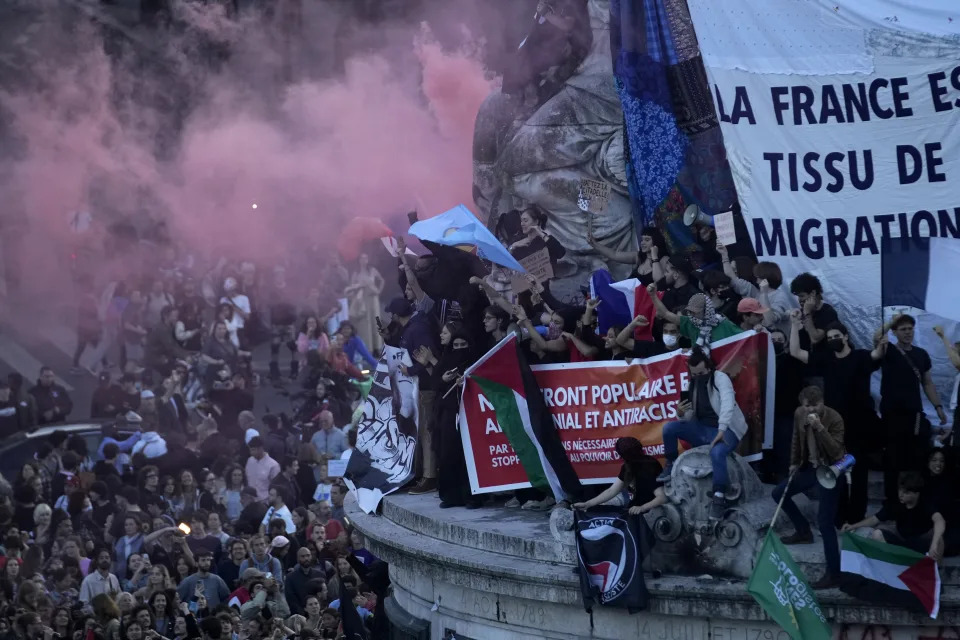A look into the group's origins and history may explain the violent nature of the ongoing conflict.

Mikail Ahmed Shaikh
The attacks of October 7, 2023, saw over 1,000 people killed in Israel, while over 250 were taken hostage by Hamas. Israel was caught off guard, as was the rest of the world. Nobody saw it coming, nor did anyone see the Israeli military’s retaliatory scorched-earth campaign in the Gaza Strip
It’s been over a year since that day, during which time Gaza has borne witness to one of the bloodiest conflicts in the region in decades.
Over 42,000 people have been killed in Gaza, with Israel no closer to rescuing the hostages, although the Israeli military assassinated Hamas chief Ismail Haniyeh in July and his successor Yahya Sinwar in October, who was the alleged mastermind of the October 7 attacks.
Meanwhile, South Africa has filed a “genocide” case against Israel with the International Court of Justice, while the International Criminal Court has applied for arrest warrants for Israeli Prime Minister Benjamin Netanyahu and his Defence Minister Yoav Gallant for war crimes.

Attempts at truce talks and mediation have thus far failed and with an extensive bombing spree in Lebanon having followed — which killed Hezbollah leader Hassan Nasrallah — there is a very real fear of the conflict expanding into a regional conflagration.
So, it warrants asking why Hamas attacked Israelis in the first place. An attack that led to one of the most violent asymmetric conflicts of the 21st century.
According to a 2023 analysis by Joe Macaron for Qatari state-run broadcaster Al Jazeera, Hamas’ attack was triggered following “growing demands for a response” to far-right Israeli policy in the occupied West Bank, especially surrounding illegal settlements.
“The rising tensions in the West Bank caused by these policies necessitated the shift of Israeli forces away from the south and into the north to guard the settlements,” Macaron writes. “This gave Hamas both a justification and an opportunity to attack.”
Moreover, Macaron argues that the normalisation of Arab-Israeli relations was an additional motive for the attack since the process “further diminished the significance of the Palestinian issue for Arab leaders who became less keen on pressuring Israel on this matter”.

On the other hand, the Centre for Strategic and International Studies (CSIS) a bipartisan, nonprofit policy research organisation, argues, “One of Hamas’s goals was simply to kill Israelis,” citing a report by The Washington Post which reported that attackers had written instructions to do so.
The CSIS piece also suggests that Hamas was driven by revenge for past Israeli violence and the illegal occupation of the West Bank.
Alternatively, a senior Hamas official told Al Jazeera in October 2023 that the group took hostages and expressed hope that the kidnappings would ensure the release of “all” Palestinian prisoners in Israeli jails.
“We managed to kill and capture many Israeli soldiers,” said Hamas deputy chief Saleh al-Arouri. “Our detainees in [Israeli] prisons, their freedom is looming large. What we have in our hands will release all our prisoners. The longer fighting continues, the higher the number of prisoners will become.”
But the answer to why the attack was launched on Israel perhaps lies in the group’s past, in how Tel Aviv or the Egyptian Muslim Brotherhood influenced the genesis of the group to control the Palestinian sphere of influence before it eventually became powerful enough to outgrow its creators.
October 7
Fighters from the Palestinian group Hamas attacked Israeli towns on Oct 7, 2023, killing and capturing scores of civilians and soldiers in a surprise assault.
The worst attack on Israel for decades unleashed a conflict that both sides vowed to escalate. According to the Rand Corporation, a US-based think tank, at least 1,200 Israelis were killed on October 7, with 250 others taken hostage and moved to the Gaza Strip.
Meanwhile, in retaliatory airstrikes that began the same day, Palestinian health officials reported that more than 230 people were killed and 1,600 were wounded in the Gaza Strip. That number has since ballooned to 42,847 fatalities as of October 24, 2024.
Tel Aviv was enraged as Israelis had been taken hostage, and the country’s self-proclaimed sovereignty was once again challenged. Israeli commanders and intelligence chiefs have since resigned over their failure to prevent the attack.

However, it must be noted that in the immediate aftermath, much of what was reported on October 7 had been exaggerated. For example, reports of mass rapes carried out by Hamas remain unsubstantiated or have been proven outright false.
Moreover, the most remote criticism of Israel’s conduct will have one branded as a Hamas sympathiser or, worse, antisemitic.
In his 2024 paper ‘Orientalism and the Discourse on Israel/Palestine’, Marcel Wegner argues that Israel portrays October 7 “as another chapter of endless Jewish suffering” and in doing so, is blurring the line between religion and state policy.
“If one argues this to be the case, it leaves no space for nuance in the discourse,” Wegner writes, adding that Israel’s narrative “creates a hegemonic discourse that is incontestable”.
What is Hamas?
A cursory glance at the group will lead you to believe that it is another in a long line of keffiyeh-wearing Palestinian freedom fighters, challenging the colonial oppressor. However, looking at the group’s origins shows that they were created to serve a different political interest.
The group was founded by Palestinian cleric Sheikh Ahmed Yassin in 1987 during the First Intifada (Arabic for uprising), according to Hamas themselves, to fight the Israeli forces that occupied Gaza at the time.
The Council on Foreign Relations (CFR), an independent nonprofit organisation, states, “Hamas is a militant movement that has controlled the Gaza Strip for nearly two decades.”

Politically, Hamas’ main rival is the Fatah party, which dominates the Palestinian Authority in the occupied West Bank. Since 2007, Hamas has been the de facto governing party in the Gaza Strip after they won the 2006 Legislative Elections. According to Al Jazeera, Fatah refused to recognise the vote and Hamas took over the enclave following a brief conflict.
To this day, reconciliations remain unfinalised, though both parties have come together as a result of the Israeli military offensive. It is noteworthy that Fatah has formally renounced the use of violence, unlike its rival.
Iran entered the picture after its Islamic Revolution in 1979 and according to the United States Institute for Peace (Usip) — a think tank founded by the US Congress — “Hamas and Iran both wanted to see Israel replaced by the Islamic state of Palestine.”
Despite hailing from different sects, both actors had shared interests, with Ayatollah Khomeini pledging $30 million annually to the group in financial support, Usip states. Israel and its allies allege Iranian backing for Hamas continues to this day.

According to a 2012 paper by Jean-Pierre Filiu, a professor of Middle East studies at Paris’ prestigious Sciences Po University, there are two “interpretations” of the origins of Hamas.
In the first, Hamas was created in December 1987, but its roots as an extension of the Muslim Brotherhood in Gaza date as far back as 1946.
Filiu argues that the second interpretation “basically depicts Hamas as a ‘golem,’ a creature in Jewish folklore fashioned from mud and made animate who ultimately escapes his master” — effectively saying that they are a creation of Israel.
Even the group’s name is rooted in both Hebrew and Arabic — in Arabic, it means “zeal” and is an acronym for the Islamic Resistance Movement, while in Hebrew, it translates to “violence”.
The offshoot
Yassin, who was killed in 2004 by an Israeli strike while leaving a mosque, had studied in Egypt and accepted the teachings of the Muslim Brotherhood, Egypt’s oldest and largest Islamic organisation, according to the BBC.
The Council on Foreign Relations states that Yassin established Hamas “as the Brotherhood’s political arm in Gaza” in 1987, adding that its “purpose was to engage in violence against Israelis as a means of restoring Palestinian backing for the Brotherhood.”
The group set out its principles in a charter in 1988, calling for the destruction of Israel. However in recent years, to moderate its image, it set out a new charter, which focused more on establishing a Palestinian state, though it does not recognise Israel.
“Palestine is a land that was seized by a racist, anti-human and colonial Zionist project that was founded on a false promise (the Balfour Declaration), on recognition of a usurping entity and on imposing a fait accompli by force,” Hamas’ 2017 ‘Document of General Principles and Policies’ reads.

Looking at its “official” history, Hamas’ origins seem to reflect its contemporaries — a resistance organisation rising against an oppressive actor.
Its initial charter suggests that the group is much more reliant on violence compared to its contemporaries like Fatah.
Israeli officials insist that the group’s violent nature has influenced their response and hesitance (or outright refusal) to negotiate a peace deal. From the Israeli perspective, Hamas poses an existential threat to its security, especially given that it is receiving training, funding and other forms of aid from its arch-nemesis Iran.
Speaking on ‘The Ezra Klein Show’ on September 20, New Yorker editor David Remnick, said a great deal can be learned about Hamas by looking at their leader, Yahya Sinwar, who has since been killed in an Israeli military operation in Gaza.
A Pulitzer-prize-winning journalist, Remnick has performed “deep, long-form reporting from Israel for decades”, host Klein said on the episode, adding that Remnick has profiled high-profile figures including Yasser Arafat, Israeli PM Netanyahu and Sinwar himself.
Remnick described Sinwar as “the most powerful person in Gaza and a decider for Hamas”, adding that he went underground after October 7 2023.
“When he was a student at university … he attached himself to Sheikh Yassin,” Remnick said. “Sinwar found himself appointed … one of the leaders of the Majd” — Hamas’ morality police. … He was jailed in the 80s and remained in Israeli jails for a couple of decades.“
During his incarceration, Sinwar wrote a novel titled ‘The Thorn and the Carnation’. “If you want to know anything about Yahya Sinwar, it is very much worth reading,” Remnick said, saying that the book shows “the roots of his politics and fury”.
“There are long passages about Sinwar and his schoolmates being taken … to visit Israel … including a visit to Jerusalem,” Remnick said. “He asks at one point, rhetorically … who will be our great Saladin?”
In the book, Sinwar was referring to who would lead the Palestinian struggle, Remnick says, suggesting, “Clearly at some level, as I’m reading it, he’s positioning himself as that great leader.”

“Sinwar isn’t a figure of extraordinary mystery,” Remnick said. “He grew more aware during his time in prison that hostage-taking was effective,” which explains Hamas’ taking captives on October 7, 2023.
Remnick then talks about the kidnapping of Israeli soldier Gilad Shalit in 2011. “Israeli society was obsessed with this case,” Remnick said, adding that he was “released for a thousand Palestinian prisoners. One of whom was Yahya Sinwar.”
Remnick’s observation suggests that Sinwar had an impact on Hamas’ modus operandi, especially considering that over 200 Israelis were taken captive during the attack.
The ‘Golem’
While Hamas was formed as an extension of the Muslim Brotherhood, there is evidence that it received substantial enough backing from Israel that it can be considered a “creation” of theirs — Filiu’s “Golem”.
Over time, Israeli officials have admitted the country’s role in propping up Hamas as a counterweight to Fatah and how that plan backfired, leading Hamas to resort to violence.
“Hamas, to my great regret, is Israel’s creation,” says retired Israeli official Avner Cohen in a 2009 interview with The Wall Street Journal (WSJ), terming Hamas an “enormous, stupid mistake”.
Cohen says that Israel “encouraged” Hamas as a counterweight to other nationalist factions, such as the Palestinian Liberation Organisation (PLO) and its dominant faction, Fatah.
 Former Israeli Religious Affairs Official Avner Cohen in a photo from 2017. — Middlebury Institute of International Studies at Monterey
Former Israeli Religious Affairs Official Avner Cohen in a photo from 2017. — Middlebury Institute of International Studies at MontereyThe WSJ piece adds that Israel “often stood aside” when Hamas and their secular left-wing Palestinian rival Fatah battled, sometimes violently, for influence in both Gaza and the West Bank.
While some Israeli officials have viewed this as a catalyst for Hamas’ rise to power, others have attributed it to the alleged backing of Iran and other actors opposed to Israel.
“Hamas in Gaza was built by Iran as a foundation for power, and is backed through funding, through training and the provision of advanced weapons,” said then-Israeli prime minister Ehud Olmert in 2009, according to WSJ.
The WSJ further adds that around Yassin’s arrest in 1984, Cohen sent a report to senior Israeli military and civilian officials in Gaza. He warned that Israel’s policy towards Hamas would allow them to develop into a dangerous force.
“I believe that by continuing to turn away our eyes, our lenient approach to Mujama (Hamas) will in the future harm us. I, therefore, suggest focusing our efforts on finding ways to break up this monster before this reality jumps in our face,” Cohen wrote.
A piece by Mehdi Hasan and Dina Sayedalahmed for The Intercept also cites Brigadier General Yitzhak Segev, who served as Gaza’s military governor in the early 1980s. Segev told a reporter for The New York Times, “The Israeli government gave me a budget… and the military government gives to the mosques.” Like Cohen, Segev stated that the aim was to prop Hamas as a counterweight to Fatah.
In a 2018 video for The Intercept, Hasan acknowledges Hamas’ creation as an arm of the Muslim Brotherhood but states that Egypt had repressed the group in Gaza before 1967. After 1967’s Six-Day War, Israel invaded and occupied the Gaza Strip and, according to Hasan, “they didn’t just turn a blind eye to the Islamists, they encouraged them.”
Hasan adds that Hamas has killed more Israeli civilians than any other group and that their leaders are “viciously anti-Israeli and even anti-semitic in their rhetoric”. He says that “the die was cast for blowback”.
EU foreign policy chief Josep Borrell said something similar in January 2024. “Yes, Hamas was financed by the government of Israel in an attempt to weaken the Palestinian Authority led by Fatah,” he said in a speech at the University of Valladolid in Spain, Reuters reported. However, he did not elaborate any further.
There is evidence that Israel has been sending funds to Hamas as late as 2018. In December 2023, Dawn published a report stating that Israel approved the transfer of more than $1 billion from Qatar to Gaza, even though there were intelligence warnings that the group was planning large-scale attacks on Israel.
It is now clear that around the 1970s and 1980s, Hamas was patronised by Israel to divide and rule the occupied Palestinian territories and control the Palestinian sphere of influence.
Furthermore, The Times of Israel reported in 2023 that an Israeli ministry drafted a proposal to transfer Gaza’s 2.3 million people to Egypt’s Sinai peninsula, “drawing condemnation from Palestinians and worsening tensions with Cairo”.
Despite being a “concept paper”, putting it in the context of rhetoric from far-right Israeli government figures shows that vacating the Gaza Strip is one of Tel Aviv’s goals.
Israel’s more extreme elements, like National Security Minister Itamar Ben-Gvir, have displayed their contempt and prejudice against Palestinians on record numerous times. In July for example, Ben-Gvir said Palestinian prisoners “should be shot in the head instead of giving them more food”.
Finance Minister Bezalel Smotrich recently called thwarting the creation of a Palestinian state “his life’s mission”. Israeli Ambassador to the UK Tzipi Hotovely said on the UK’s Channel 4 that she has “no empathy” for Palestinians in Gaza.

The Intercept states: “To be clear: First, the Israelis helped build up a militant strain of Palestinian political Islam, in the form of Hamas and its Muslim Brotherhood precursors; then, the Israelis switched tack and tried to bomb, besiege, and blockade it out of existence.”
Hamas reflects the fate of many other proxy groups — a state wanted an actor under its control to maintain its sphere of influence or to fight a hostile actor and disrupt theirs.
As with Afghanistan, this plan backfired and Frankenstein’s monster is trying to kill its creator. Thus, one can deduce that Israel’s impetus for prolonging the ongoing conflict is not just to eliminate a threat to its security, but also to rectify a grave error.
One year on
The nature of the October 7 attacks, and the subsequent fighting thereafter, fall in line with Hamas’ behaviour as an organisation. They are the most powerful Palestinian faction out of their contemporaries and have made the most of their regional alliances with Iran and other armed groups to further their goals.
Looking at their origins, it is clear that Israel’s patronage of Hamas contributed to the group’s actions since 1987, as well as why the present conflict is unparalleled in its violence. Their activity was enabled by Israel in the 1970s and 1980s, empowering them as a policy option against the more popular, secular Fatah.

However, this plan backfired, thanks to a lack of forward-thinking, the group’s innate antisemitism having been born during the first Intifada and the presence of a convenient proxy for Israel’s enemies.
Given the unprecedented nature of this conflict, Hamas may grow even more entrenched in its ideology and possibly return to the initial charter from the 1980s, which in turn would invite an even harsher response from Israel — a vicious cycle that will result in more innocents on both sides getting caught in the crossfire.
Mission accomplished?
Having observed the events of the past year, it can be argued that the aftermath of October 7 is something Hamas neither foresaw nor wanted. Their leadership is dead, the Gaza Strip is in ruins and over 42,000 people have been killed — more if one counts the bodies buried under rubble, or not in one piece. They knew Israel would react — it is doubtful they expected a retaliation to this extent.
The impact of the conflict — the spread of disease, famine and a lack of medical facilities — could act against the group, turning what’s left of their support base in Gaza against them.
On the other hand, if they aimed to destabilise or divide Israel, then they have arguably achieved that goal. Israeli politics are deeply divided, with opposition leaders incessantly calling for Netanyahu’s resignation. Israelis are out on the streets protesting the offensive, demanding the return of the hostages and an immediate ceasefire. A ceasefire, it seems, Netanyahu is unwilling to enact, lest he lose his seat at the head of government.
Netanyahu was embroiled in a corruption scandal before the events of October 7. He was accused of receiving luxury goods and disrupting “investigative and judicial proceedings” and was formally indicted in 2019, according to The New York Times. The trial began in 2020.
According to The Times of Israel, Netanyahu’s corruption trial has been delayed until 2025, having been suspended in October 2023 after the attacks. “The prime minister faces charges of fraud and breach of trust in Case 1000 and Case 2000, and charges of bribery, fraud and breach of trust in Case 4000,” The Times of Israel adds.
The Israeli Army’s former head of operations, Major General Israel Ziv said that the offensive has become a source of “political stability” for the Israeli PM. For Netanyahu and his government“.
A refusal to cease hostilities amid immense pressure both at home and from abroad, even from some of its staunch allies, is causing Tel Aviv to become a political pressure cooker. Something that works to Hamas’ benefit.





